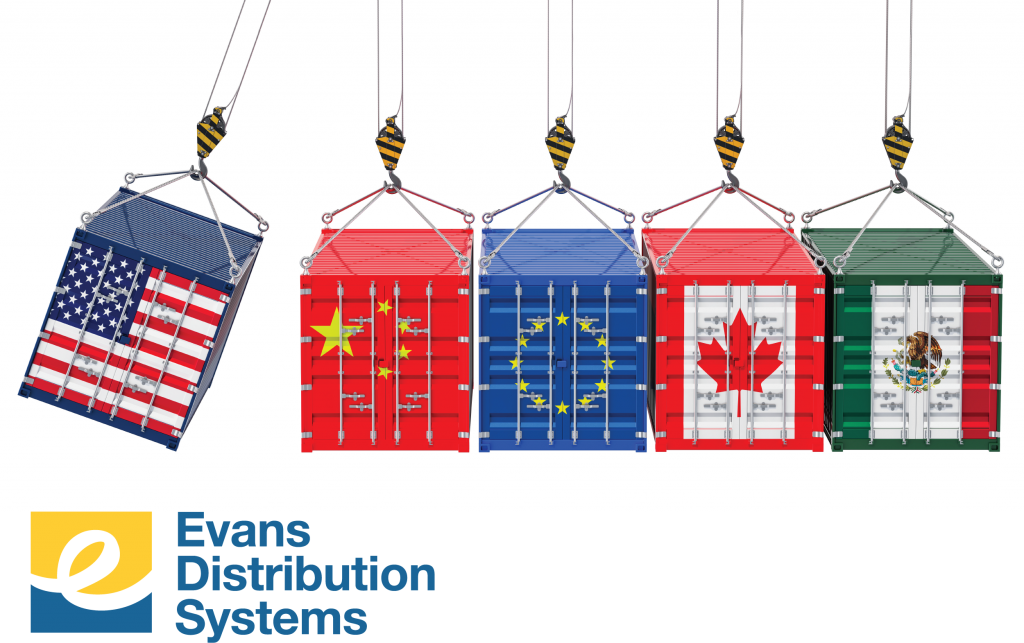What is going on with all these tariffs? For the past two years, tariffs have been a major news story since President Trump started adjusting them in 2018. Discussions began with China in January 2020 to institute new trade agreements. However, negotiations have been at a standstill since then, leaving people wondering what will become of these new Chinese tariffs. This is especially concerning as new trade deals are made with other countries and businesses continue to adapt to COVID-19. This article discusses how tariffs are implemented, its effects, and what we can expect moving forward.


Types of Tariffs
There are two types of tariffs that can be enacted – Section 232 and Section 301. Tariffs cannot be instituted for any reason. There needs to be a reason such as the ones listed below.
- Section 232 allows the president to institute tariffs on product that threaten U.S. national security.
- Section 301 allows the president to institute tariffs when other nations are engaging in unfair trade practices.
According to the American Action Forum, approximately 94% of tariffs instituted in the last two years are Section 301.
It’s important to understand that tariffs cannot just be instituted for any reason. The two types of tariffs that can be enacted are a Section 232 and a Section 301. Section 232 allows the president to institute tariffs on products that threaten U.S. national security. Section 301 allows the president to institute tariffs when other nations are engaging in unfair trade practices. According to the American Action Forum, approximately 94% of tariffs instituted in the last two years are Section 301.
Cost of Tariffs
Most tariffs that have been instituted were on Chinese imports. From 2018 to 2019, the value of Chinese imports fell by 23% or $100 billion. In addition, the increased cost of imports entering the U.S., as a result of these tariffs, was $56.8 billion dollars a year.
In January 2020, we saw a slight improvement when phase one of a new trade deal with China was agreed upon. In this phase, the tariffs on imports from China were reduced or suspended in return of China agreeing to purchase $200 billion of U.S. exports over the next 2 years. These exports will include automotive parts and agricultural products. This agreement was reached before the COVID-19 pandemic which reduced trade all over the world. Due to reduced shipping between countries, it is unclear if China will uphold this deal.
There was been discussions on instituting tariffs on European Union imports. The purpose of these is to spark trade negotiations with automotive manufacturing. These were investigated under Section 232 but fell through due to missing the statutory deadline. It’s reported that this will be reviewed again under Section 301. This will give the president the authority to impose tariffs on all goods, not just auto parts.
Nearshoring Makes Trade Easier Close to Home
The disruption caused by COVID-19 and high tariffs has caused many U.S. businesses to move manufacturing operations closer to home. Luckily for these businesses the U.S., Canada, and Mexico created a new trade deal to replace NAFTA called the USMCA. Our article on the USMCA explains some of the details of this agreement. In short, the USMCA makes it more cost-effective to move manufacturing operations to North America by providing tax benefits on manufactured goods between the three countries. For now, the nearshoring trend is here to stay.
To help reduce added costs imposed by tariffs you may want to consider utilizing a Foreign Trade Zone. Evans Distribution Systems operates General Purpose Foreign Trade Zone #70 that expands over four of our warehouses. Contact us for more information on how a Foreign Trade Zone can help your business with existing tariffs.
